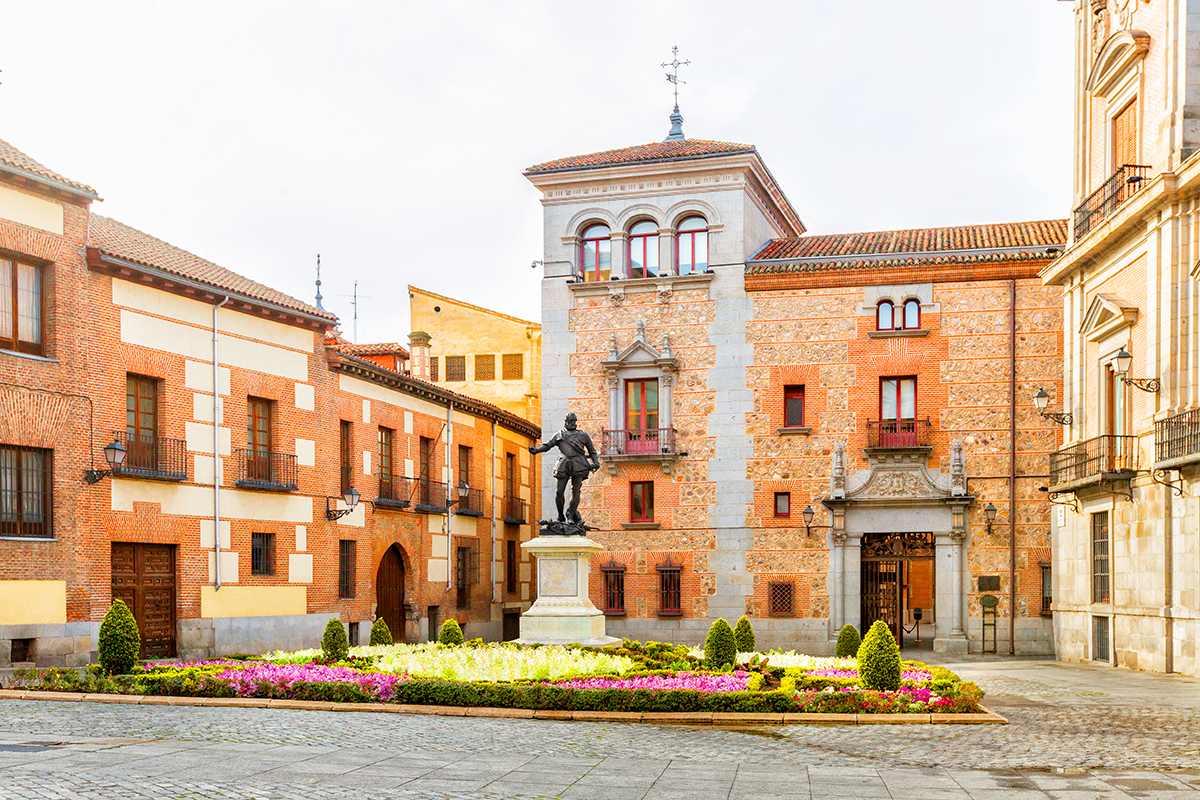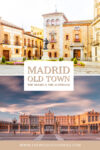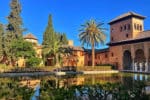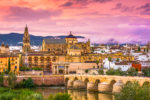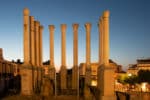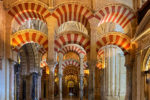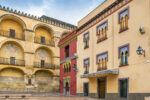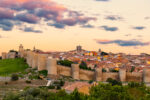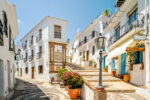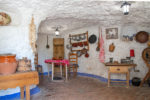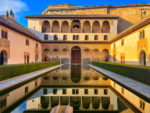Unlike many other cities in Spain, Madrid doesn’t have a well-defined and easily discernible medieval city centre, something that could be considered an ‘old town Madrid’. But that’s not to say that you can’t discover it if you know where to look.
To understand Madrid’s history and Spanish culture in general, you have to remember that for over seven centuries (711-1492) much of the Iberian Peninsula was occupied by the Arabs, often referred to as the Moors.
Their kingdom, Al Andalus prospered during the Caliphate of Cordoba, the period of Taifa kingdoms, and, finally, the Nasrid Kingdom of Granada.
In the mid-9th century, Madrid or Magerit was a small fortified city built on a small hill by the Manzanares River under the rule of the powerful Cordoba Emir Muhammad I.
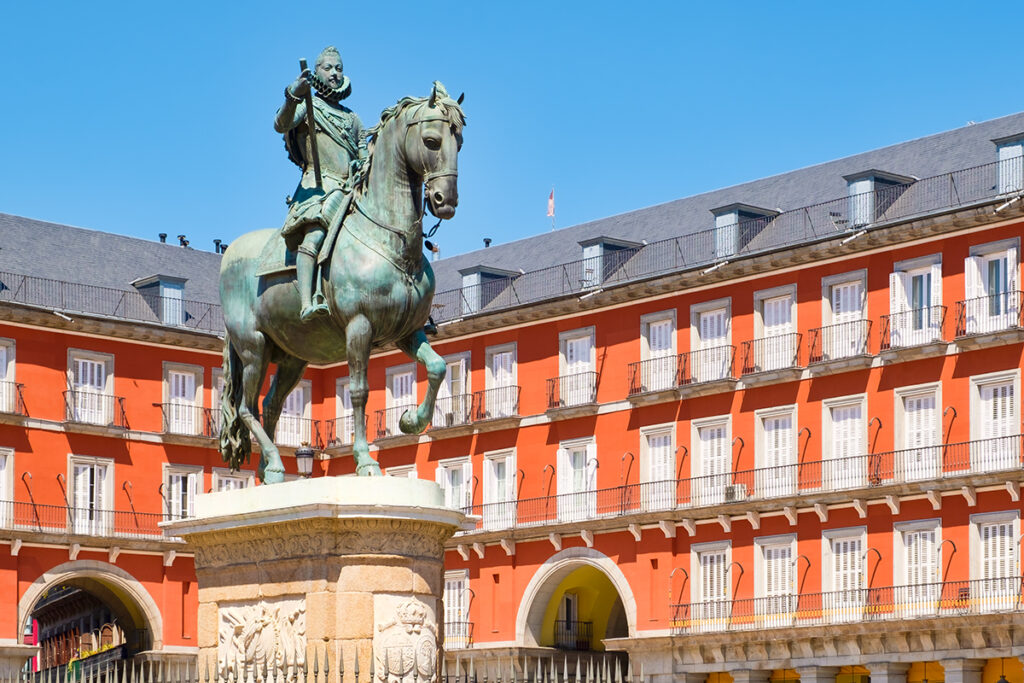
But the Arab rule was quite short-lived in Madrid – less than two centuries. The city was reconquered by the Christians as early as 1085. Not surprisingly, most of the grand Moorish buildings were destroyed to give the city a Christian face.
But even after the Christian conquest, there were many Muslims living in Madrid building new structures in what has become known as the Mudejar style that combines elements of Muslim and Christian influences.
Most of what is currently considered Madrid’s old town belongs to the era of Austrian rule in Madrid (1625 – 1868), an area known as Madrid of the Austrians.
This guide is intended as a self-guided walk, but if you prefer guided exploration, you will love the Madrid Walking Tour, which includes a visit to the Royal Palace.
Moorish Madrid Old Town
The only structures built by the Arabs that remain in Madrid are the remnants of the city’s defence walls. From the later period, a few Mudejar towers survived by being incorporated into newly-built structures around the 14th-15th centuries.
Today, Madrid is the only European capital city founded by Muslims, even though the traces of its Moorish past are few and far between. Here’s where you can find vestiges of the Moorish old town Madrid.
The Arab Wall
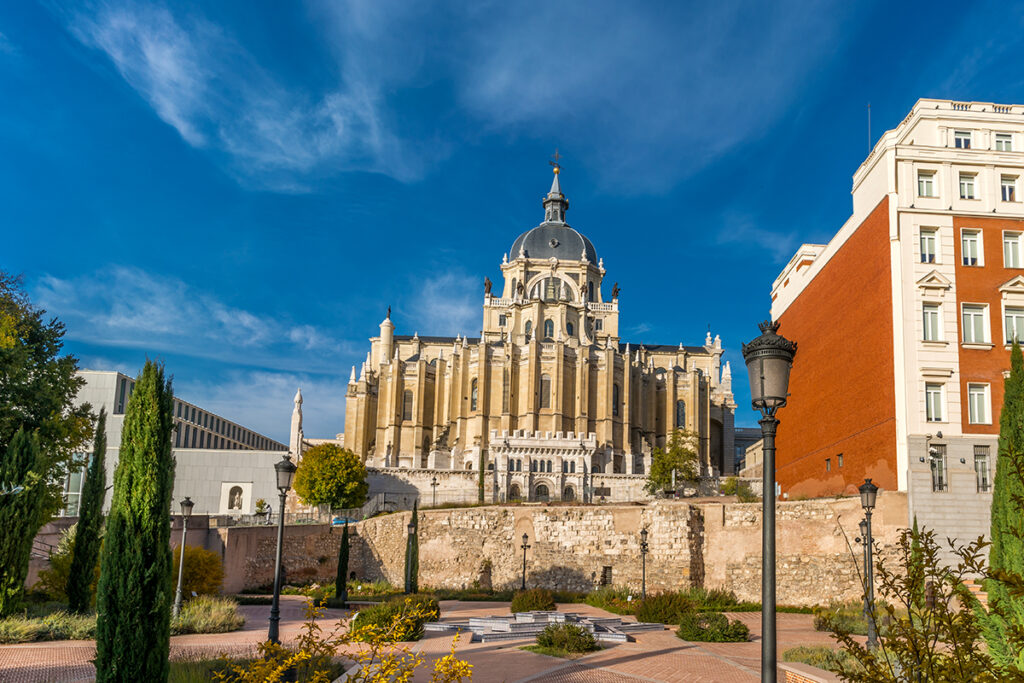
In Moorish Madrid old town was contained within the city walls. You can see a remaining section of this Arab Wall in Emir Mohamed I Park, around Cuesta de la Vega.
The first wall to be built around Madrid was erected between 850 and 866 during the rule of Muhammad I of Cordoba who is considered to be the founder of the city.
The walls were reinforced by the towers standing about 20 meters apart. A part of one watch tower, Torre de Narigües, survives at 83 Calle Mayor, next to the Segovia Viaduct (not to be confused with Segovia Aqueduct, in Segovia).
Fragments of another, Torre de Huesos (Tower of Bones), can be found in the underground car park at Plaza de Oriente.
Church of San Gines de Arles
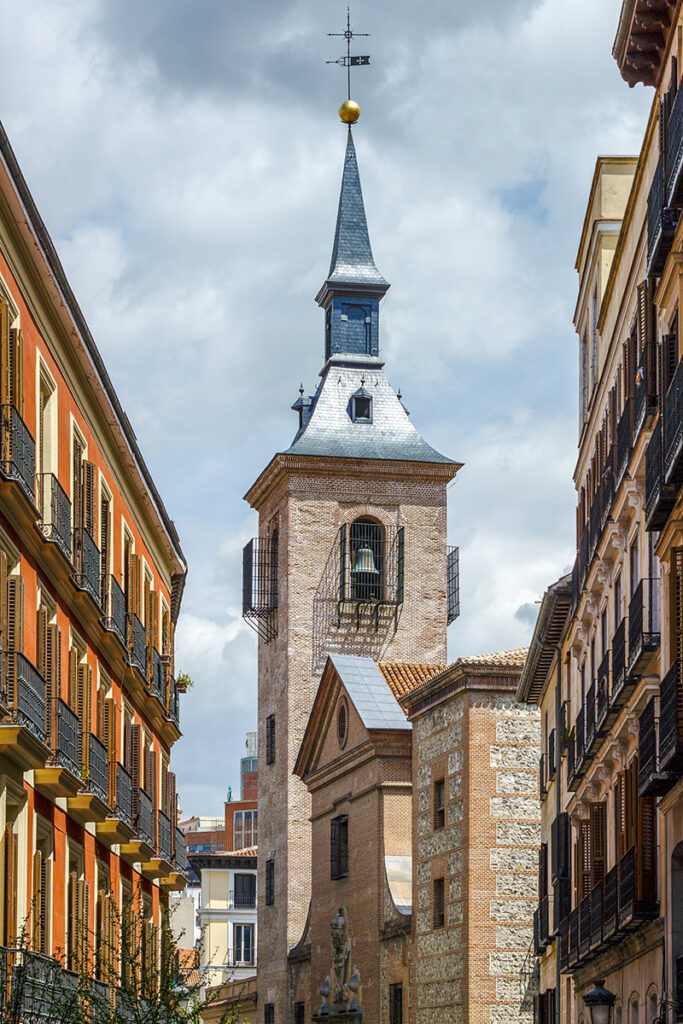
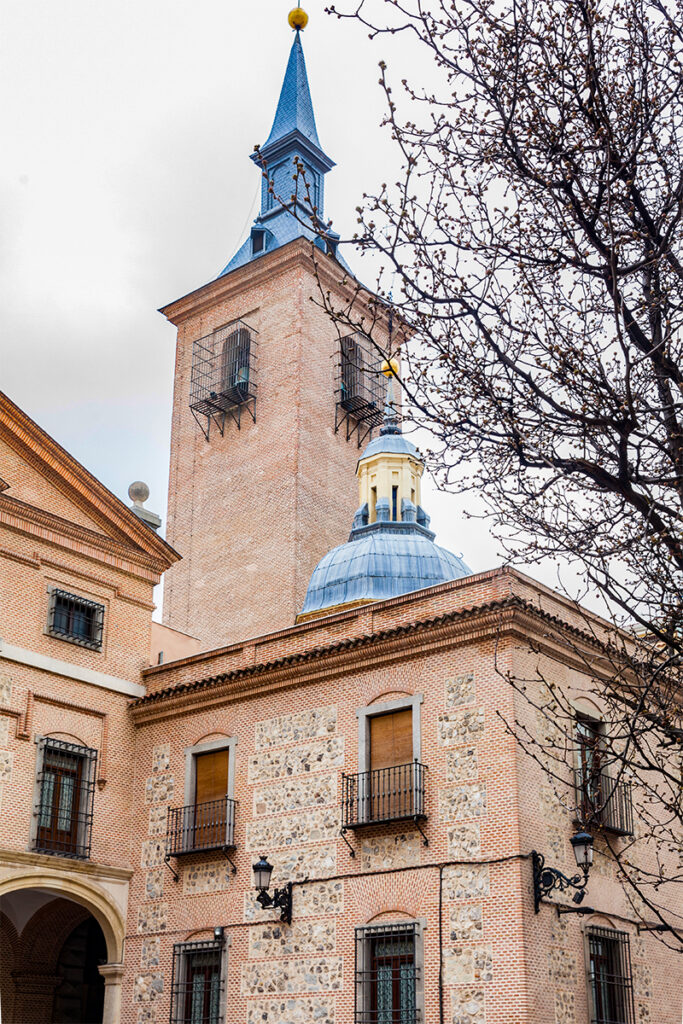
Perched on Calle Arenal, the church of San Ginés is one of the oldest, possibly the oldest, in Madrid. First documented records of this church date back to the earliest days of the city, in the ninth century. In times before the Christian conquest in 1085, a Christian community lived in this area and their church stood on this site.
The church you see today was built in 1645 and then underwent a major reconstruction after a fire in 1824. Only the bell tower survives from the 1645 Mudejar-style construction.
Lujanes House and Tower
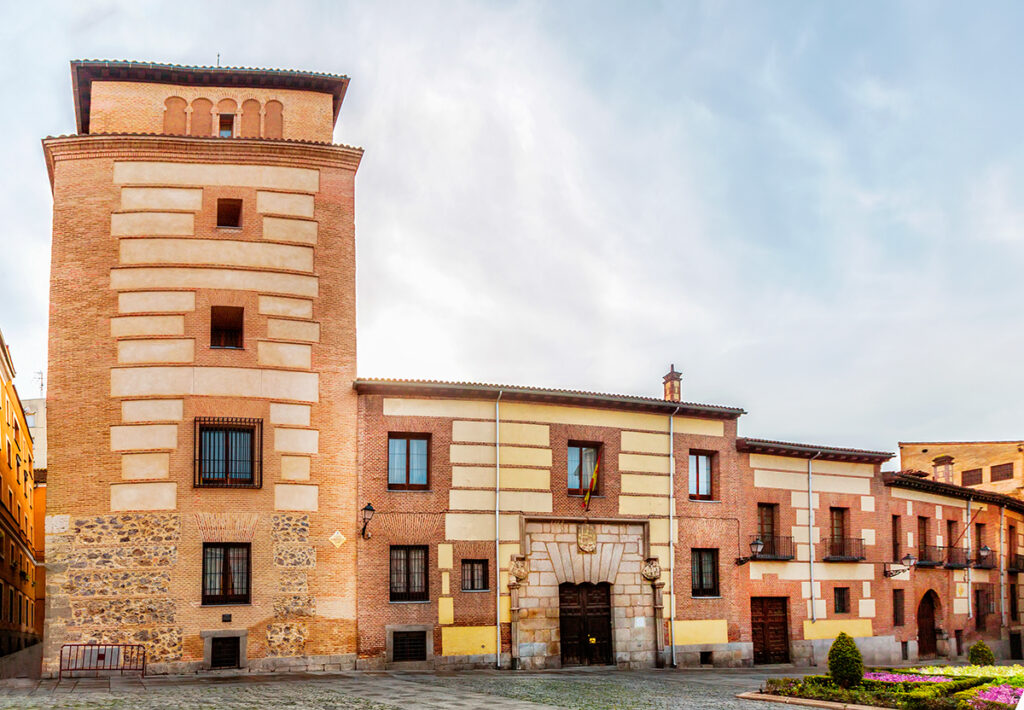
Located in Plaza de la Villa, one of the oldest squares in Madrid, Lujanes House and Tower form a single structure today, although the tower is older. The house was built in the late 15th century, incorporating the existing three-story-high tower, topped with a turret.
The name of the house and the tower come from the Luján family, an ancient Aragonese lineage from the village of Luján in Huesca, who bought the building around 1450. You can see the Luján family logo above the doorway.
The entire complex is built in the Mudejar style combining Moorish and Christian elements. The building is not open to the public, but its exterior is certainly worth a look – it is one of the oldest, if not the oldest, secular buildings in Madrid.
Church of San Nicolas de los Servitas
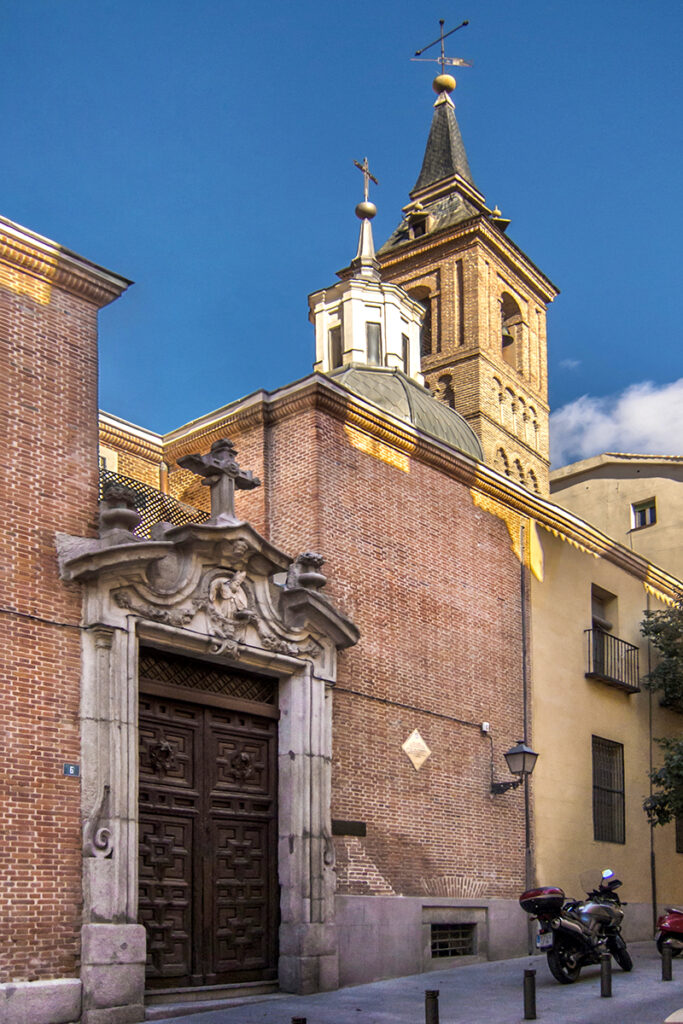
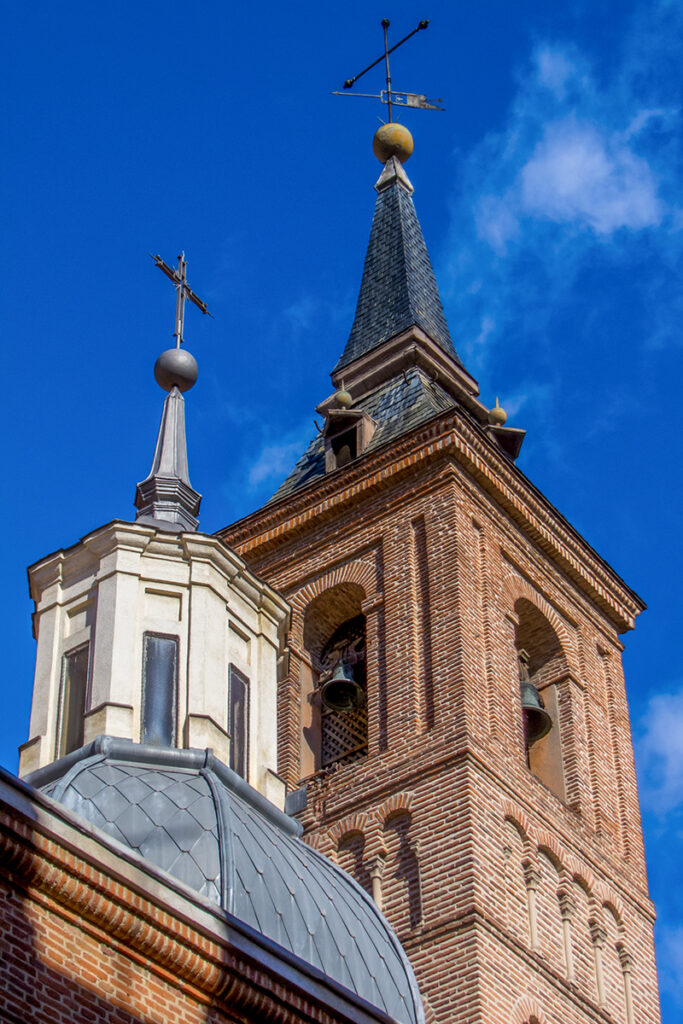
The bell tower of the church of San Nicolas de los Servitas is as close to the Moors as you get in Madrid. The earliest records of this church date back to 1202. Archaeological artifacts collected at the site suggest that the church and its Mudejar bell tower may have been part of an earlier mosque. It was probably built by the Moors who lived under Christian rule, following the reconquest of Madrid by the king of Leon and Castile in 1085.
This makes the bell tower of San Nicolas church the oldest still-standing Moorish-style building in Madrid. The rest of the church dates to the 15th century.
Church of San Pedro el Viejo
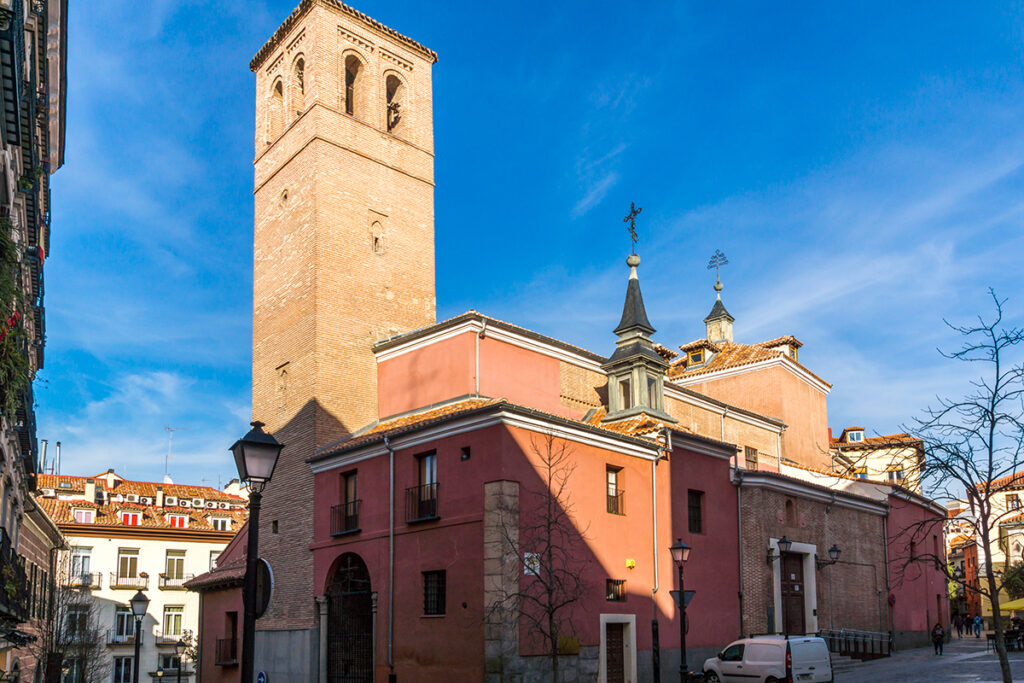
Another church with a Mudejar style bell-tower is the church of San Pedro el Viejo, located at the heart of the old Moorish quarter, in the present-day La Latina neighbourhood.
Again, the tower is about a century older than the church dating back to the 14th century. Built out of brick, it is decorated with the characteristic ‘Mudejar’ horseshoe-shaped arches above the windows.
The church was originally built in 1344 but was extensively refurbished through the centuries to become a Renaissance-style structure with a Mudejar tower.
Madrid of the Austrians – New Old Town Madrid
Madrid of the Austrians is an area that was the centre of the city during the rule of the Austrian Habsburg Dynasty (1516–1700). It lies between the Metro stations Sol and Ópera and incorporates the iconic sites of the city including Plaza Mayor and the Royal Palace. Madrid became the capital of Spain during this era, in 1561, and the city flourished.
Walls of Felipe IV
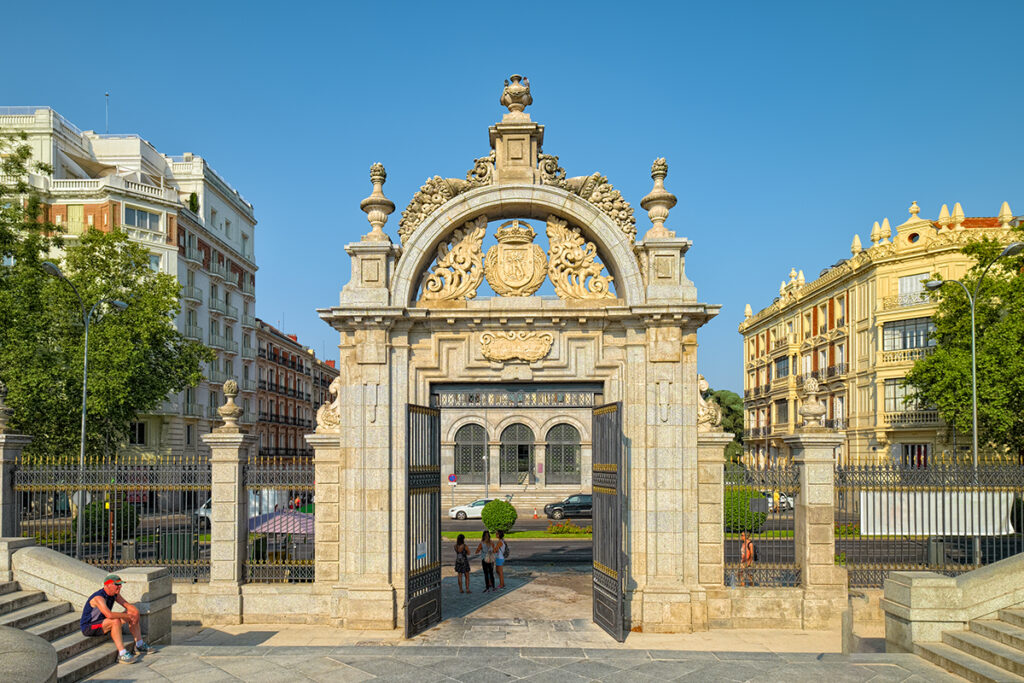
As Madrid continued to outgrow its walled confines, newer walls were built around the city. You can see some remnants of the Walls of Philipe IV that surrounded Madrid between 1625 and 1868. One section of this wall is incorporated into the wall of Las Vistillas Gardens. Another section is next to the Ronda de Segovia fire station, near the Puerta de Toledo (Toledo Gate) which stands on the site of an earlier city gate within these walls.
If you wanted to see one of the original city gates, Felipe IV Gate, opposite Retiro Park, is the oldest gate in Madrid. It was built in 1690.
Puerta del Sol
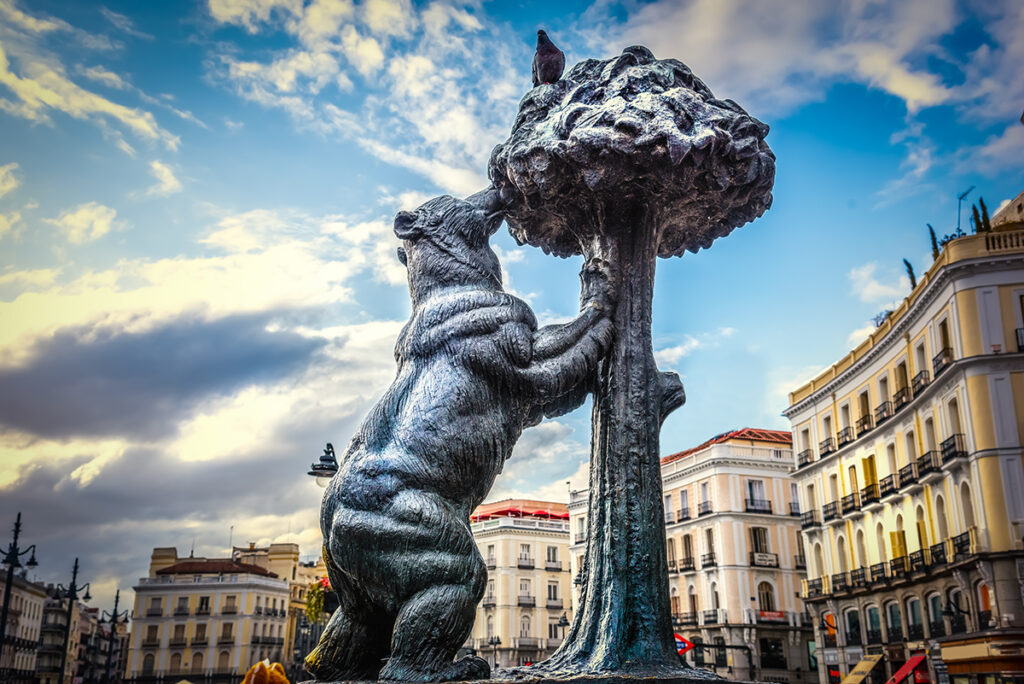
Puerta del Sol (Gate of the Sun) originated as one of the gates in the Christian wall in the 15th century. As Madrid expanded outside the city walls, the gate served as an important area – a link between two areas of the city.
Today, Puerta del Sol lies at the very heart of Madrid. It is home to the Kilometer Zero plaque – the point from which the distances are calculated in the Spanish road system.
Also at Puerta del Sol is the famous Statue of the Bear and the Strawberry Tree that represents the coat of arms of Madrid. The statue is a recent addition, unveiled in 1967, but it quickly became an iconic symbol of Madrid.
Plaza Mayor
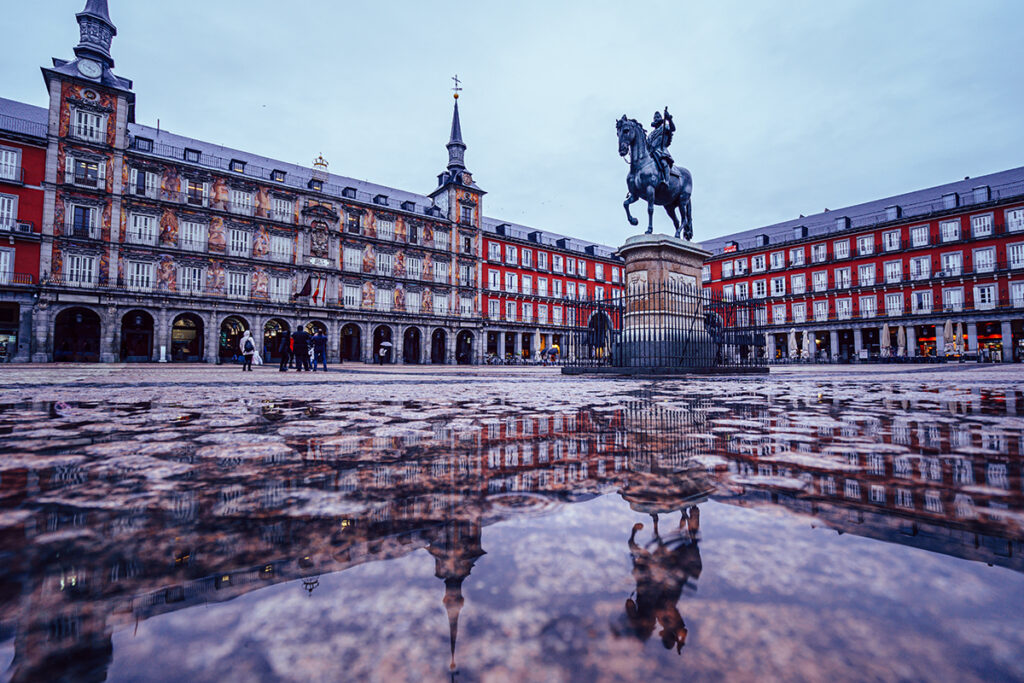
Perhaps the most iconic site of Madrid of the Austrians is the Plaza Mayor, a sprawling esplanade with the statue of its builder, Philip III of Spain, in the middle.
Plaza Mayor was first built as a market plaza in 1690, but over the centuries it faced various misfortunes and had been destroyed by fire three times: in 1631, 1670, and in 1790.
The current construction with its perimeter of three-storied buildings and arched porticos dates to the 1854 reconstruction.
In its three centuries of being the heart and soul of Madrid, Plaza Mayor has seen busy markets, Royal ceremonies and an occasional inquisition trial. Today it’s filled with (overpriced) cafes and souvenir shops.
Santa Cruz Palace
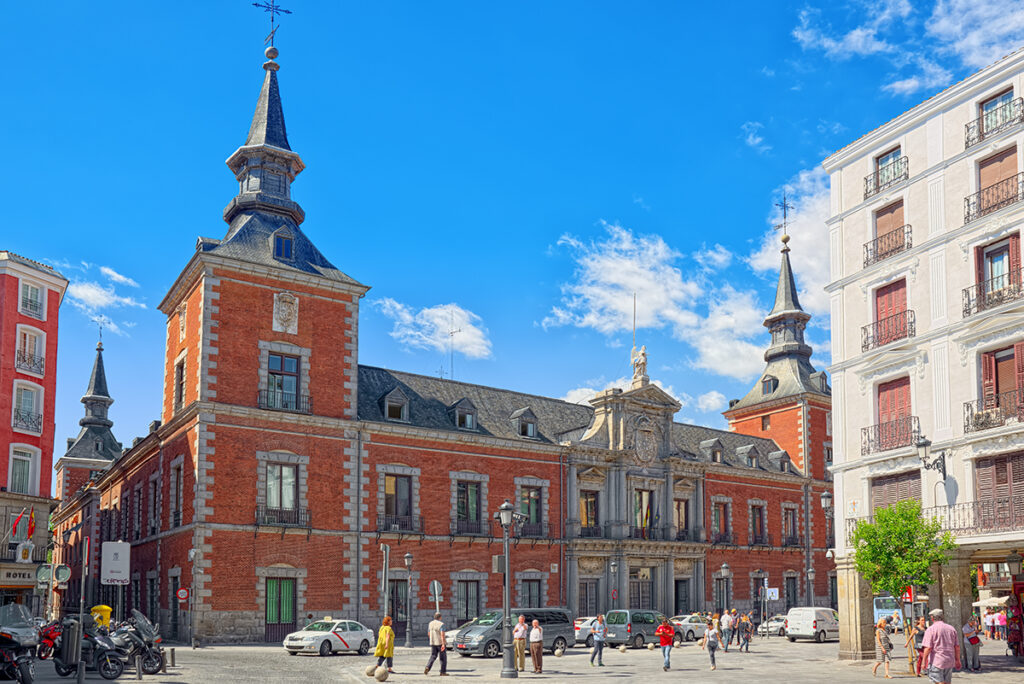
Just a block away from Plaza Mayor, Palacio de Santa Cruz is another characteristic feature of Madrid of the Austrians. It was built between 1629 and 1643 in the late Spanish Renaissance style, with the characteristic red facade and white-framed windows. Together with Plaza Mayor and Plaza de la Villa, it preserves the appearance and the charm of Hapsburg’s Madrid.
The building started off as a jail and courthouse until Philip IV converted it into a palace. Today Palacio de Santa Cruz houses the Spanish Foreign Ministry.
Sobrino de Botín
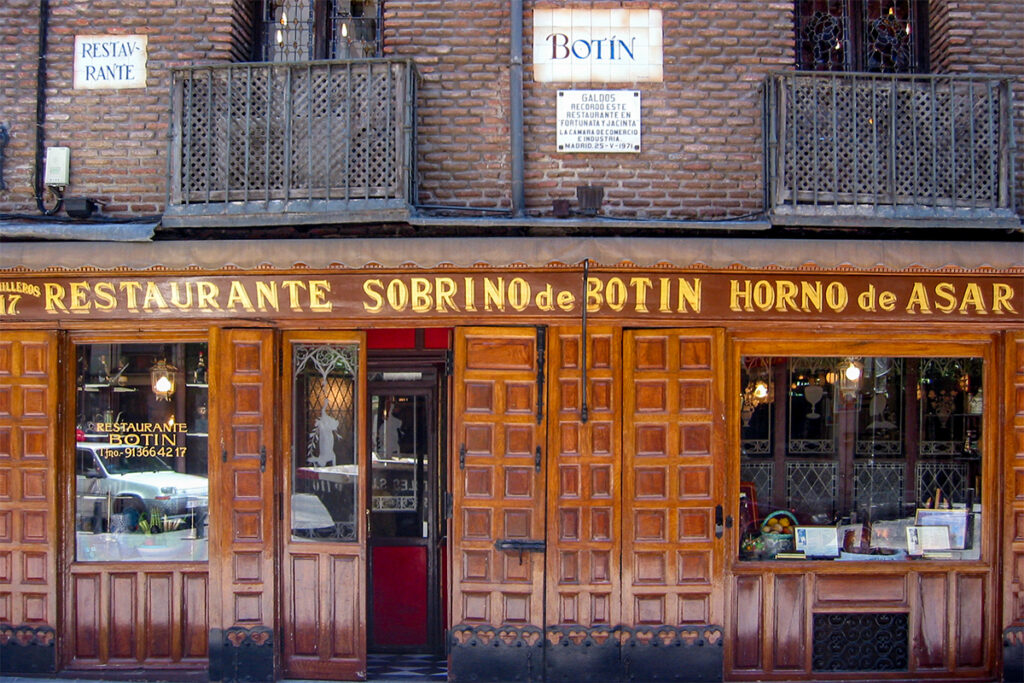
Sobrino de Botin is not only the oldest restaurant in Madrid, but according to the Guinness Book of Records, it is the oldest restaurant in the world. The restaurant opened in 1725, but the building dates back to 1590, barely 30 years after Felipe II established the capital of Spain in Madrid.
Over the centuries, Botin has seen a fair share of famous personalities. Francisco de Goya worked here as a waiter and the dining clientele included Ernest Hemingway, Benito Pérez Galdós and Graham Greene.
Plaza del Conde de Miranda
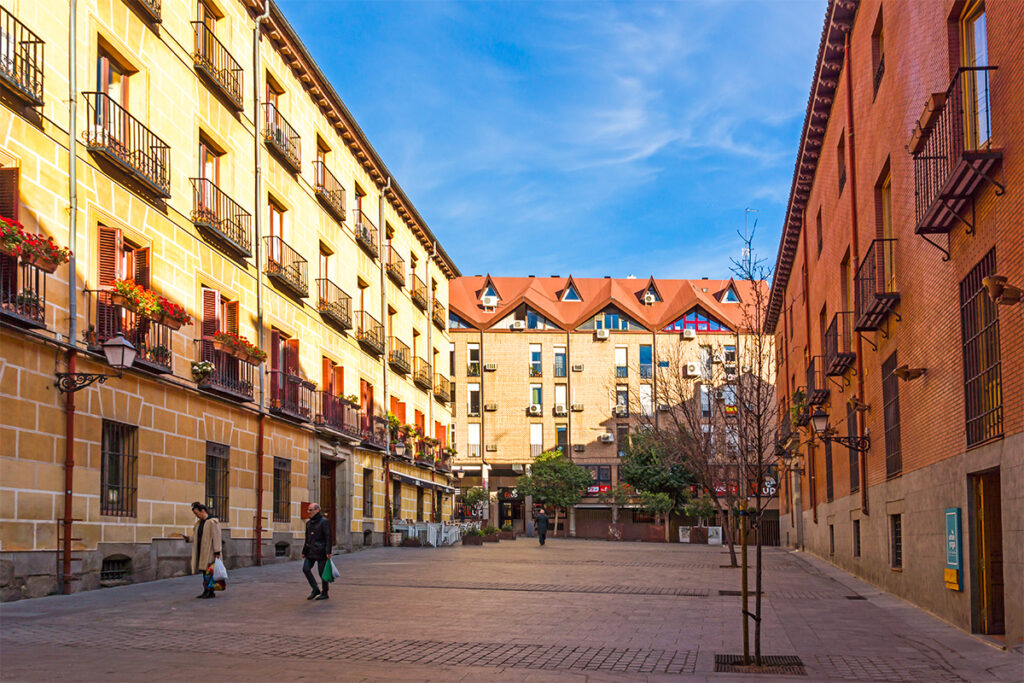
This lovely pedestrian square retains the charming medieval atmosphere of Madrid of the Austrians.
The interesting buildings in this secluded square is the Convent of the Jerónimas del Corpus Christi founded in the 17th century and the back of the Basilica of San Miguel.
Plaza de La Villa
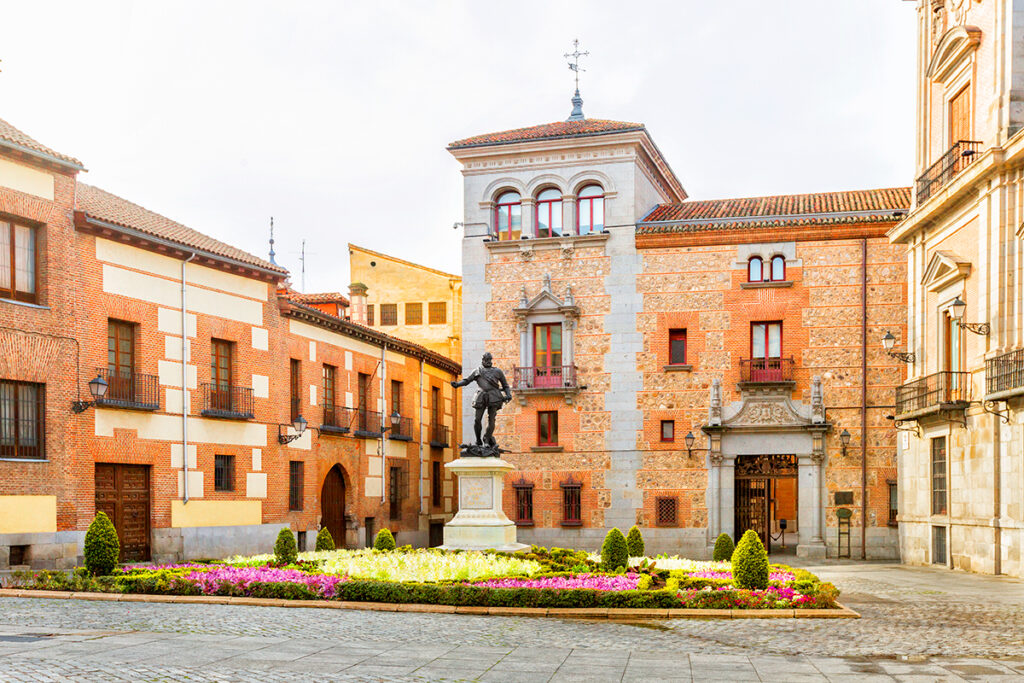
While Plaza Mayor was the commercial centre of Madrid old town, Plaza de La Villa was the town’s civic heart. Madrid Town Hall (Ayuntamiento) occupied Plaza de la Villa since the medieval times (XIV century). This plaza is one of the most charming vestiges of old Madrid.
The oldest building in Plaza de la Villa, and one of the oldest in Madrid, is Torre de los Lujanes. Built in the Gothic style in the 15th century it predates Madrid of the Austrians almost by a century.
Next to the Town Hall is Casa de Cisneros which was built in 1537 by Juan Gómez de Mora of the Plaza Mayor fame.
Royal Palace
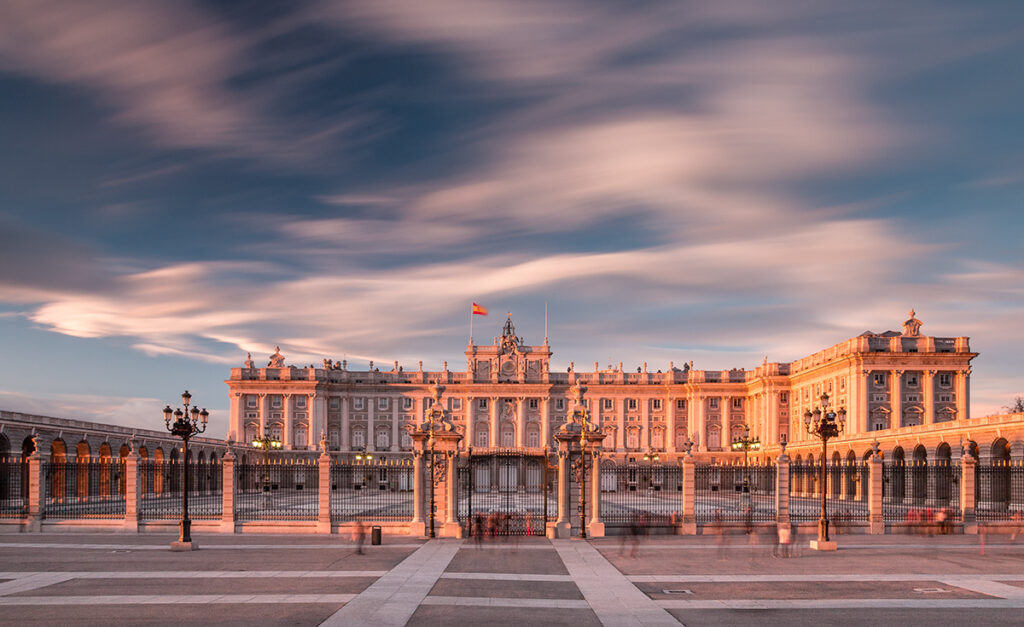
The legend has it that the site that currently hosts the royal Palace, was previously occupied by a Moorish fortress that controlled the passage between the cities of Segovia and Toledo. The Arab walls that surrounded Moorish Madrid formed a defensive ring around the fortress.
The fortress would eventually become the Royal Alcazar of Madrid until it was completely destroyed by fire in 1734.
The Royal Palace we see today was built after the fire and the construction took 17 years, from 1738 to 1755. The new palace is immense. With 3,418 rooms Madrid’s Royal Palace is the largest palace in Europe. It is the official residence of the Spanish Royal Family, and parts of it are open to the public. And since the palace is so enormous the tourist route through the building changes every few months.
Plaza Oriente
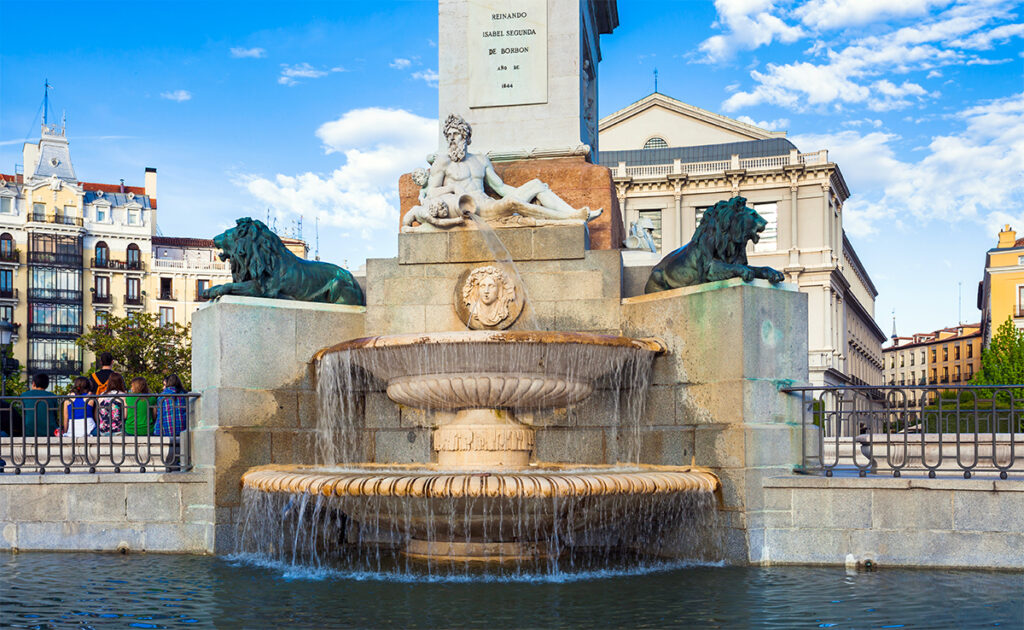
Lying between the Royal Palace and the Royal Theater, Plaza de Oriente was built at the bequest of Queen Isabel II in 1844. The Queen desired for her palace to be surrounded by beautiful grounds. And to beautify the grounds, three gardens were established – Cabo Noval, Lepanto, and the Central. Statues were brought in from around the city, including the bronze statue of Philip IV that used to stand in Retiro Park.
A curious bit of trivia about this statue is that it is the world’s first statue of a rearing horse and a rider that stands on its own two legs. The sculptor, Velazquez, was able to achieve this feat of creative engineering thanks to Galileo’s ingenious suggestion to cast the horse’s back legs in solid bronze and make its front legs hollow.
Underground Museum of Caños del Peral
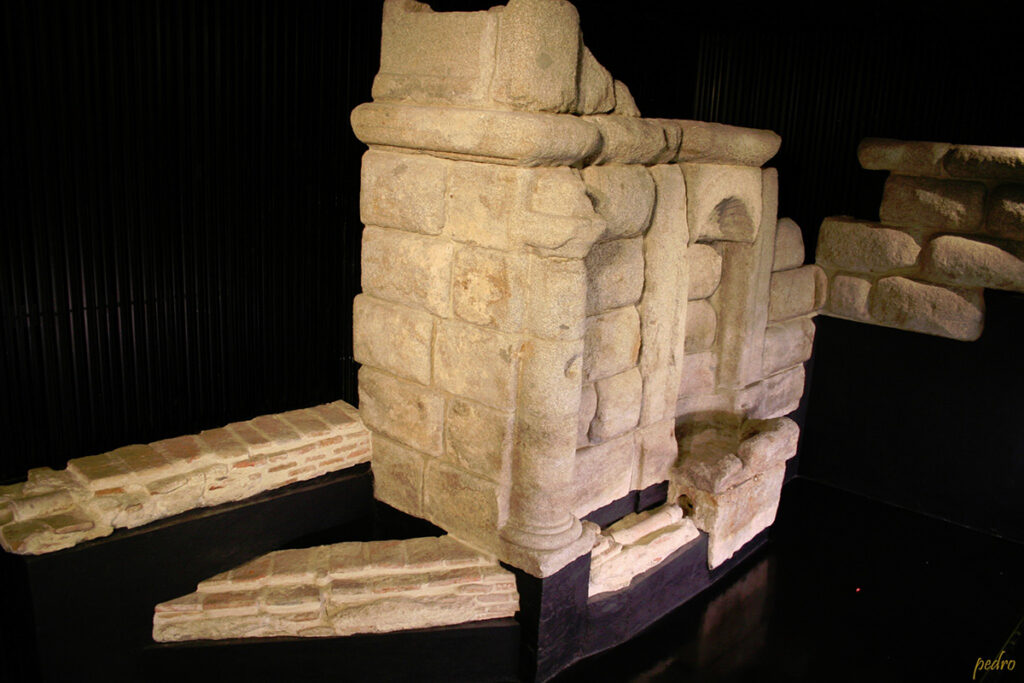
Perhaps the most unusual and the least known museum in Madrid, Museo de los Caños del Peral is hidden away ten meters below Plaza de Isabel II. It is part of Opera Metro station and is free to enter with a metro ticket.
The tiny 200-square-meter archaeological museum protects a fabulous section of Old Town Madrid of the 16th century: the historical Fountain of Caños del Peral, a fragment of the Amaniel Aqueduct, and parts of the old Arenal Sewer. These buried structures were part of Madrid’s water supply system. The aqueduct brought water to the fountain from the Arenal stream. And the fountain served as the source of water for the inhabitants of the city.
The museum is located on the second level of the station, next to the escalators that allow transit to line 5.
Hope you enjoyed your journey through Madrid’s old town from the Moorish fortress to Madrid of the Austrians. Keep an eye out for some of these buildings and squares as you wander around Madrid and you’ll feel a deeper connection to the city by understanding some of its history and culture.
More on Exploring Spain
- 10 Ideas for Planning an Amazing Southern Spain Road Trip
- 26 Things to Do in Cordoba: Guide to Planning Cordoba itinerary
- Roman Cordoba Self-Guided Walk
- Guide to Visiting Cordoba Mezquita, When to Visit and What to See
- Discover Moorish Cordoba in 16 Monuments
- 15 Picturesque Walled Cities in Spain – Beyond Game of Thrones
- 16 Best Things to Do in Avila – Spain’s Amazing Medieval Walled Town
- 17 Fabulous Weekend Breaks in Spain: Must-See Destinations and Hidden Gems
- Sacromonte Caves: The Best-Kept Secret in Granada
- Discover Moorish Granada in One Day on This Self-Guided Walk

